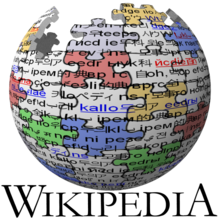Introduction
Wikipedia stands as one of the most powerful sources of information in the digital age, with millions of articles covering a vast array of topics. However, what makes Wikipedia unique is its collaborative nature – anyone with internet access can edit its pages. Editing a Wikipedia page might seem straightforward, but it requires adherence to certain guidelines and best practices to ensure accuracy, neutrality, and reliability of information. In this comprehensive guide, we delve into the art of top editing a Wikipedia page, exploring the essential steps and considerations for effective editing.
Understanding Wikipedia’s Policies and Guidelines
Before diving into editing, it’s crucial to familiarize yourself with Wikipedia’s core policies and guidelines. These include:
1. Neutral Point of View (NPOV)
Wikipedia articles must be written from a neutral perspective, presenting information without bias or opinion.
2. Verifiability
All information added to Wikipedia must be verifiable through reliable sources. Editors should cite credible references to support their contributions.
3. No Original Research
Wikipedia is not a platform for publishing original ideas or research. Information must be based on reliable secondary sources.
4. Notability
Articles on Wikipedia must focus on topics that are notable and have received significant coverage in independent sources.
5. Reliable Sources
Information added to Wikipedia should come from reliable, published sources with a reputation for fact-checking and accuracy.
Steps for Top Editing a Wikipedia Page
Now that we’ve outlined the foundational principles, let’s explore the step-by-step process for top editing a Wikipedia page:
1. Create an Account
While anyone can edit Wikipedia anonymously, creating an account provides certain benefits, such as the ability to track your contributions and communicate with other editors.
2. Research the Topic
Before making any edits, thoroughly research the topic to ensure accuracy and completeness. Consult reliable sources to gather information and verify facts.
3. Navigate to the Page
Locate the Wikipedia page you wish to edit using the search bar. Once you’ve found the page, click on the “Edit” button at the top of the article.
4. Make Your Edits
Carefully make your edits, following Wikipedia’s style guidelines and ensuring adherence to policies such as NPOV and verifiability. Provide citations for any information you add or modify.
5. Preview and Save
Before saving your changes, use the “Preview” button to review how your edits will appear on the page. Make any necessary adjustments, then save your changes with a concise edit summary explaining the nature of your edits.
6. Engage with the Community
Wikipedia is built on collaboration and discussion. Engage with other editors by participating in talk pages, where you can discuss proposed changes and resolve disputes civilly.
7. Monitor Your Contributions
After editing a page, monitor it for any subsequent changes or discussions. Be prepared to defend your edits with reliable sources and reasoned arguments if necessary.
Best Practices for Effective Editing
To ensure your edits contribute positively to Wikipedia’s quality and reliability, consider the following best practices:
1. Be Neutral and Objective
Present information in a neutral tone, avoiding biased language or opinions. Stick to the facts supported by reliable sources.
2. Provide Detailed Edit Summaries
When saving your edits, include a concise summary explaining the changes you’ve made. This helps other editors understand your intentions and facilitates collaboration.
3. Respect Consensus
Wikipedia operates on the principle of consensus-building. Respect the opinions of other editors and be willing to compromise to reach consensus on contentious issues.
4. Use Edit Tools Wisely
Utilize Wikipedia’s editing tools, such as citation templates and formatting options, to enhance the readability and professionalism of your contributions.
5. Be Patient and Persistent
Editing Wikipedia can be a collaborative process that requires patience and persistence. Don’t be discouraged by reverts or disagreements – use them as opportunities for learning and improvement.
Conclusion
Editing Wikipedia pages is not just about making changes; it’s about upholding the integrity of one of the world’s largest repositories of knowledge. By adhering to Wikipedia’s policies, following best practices, and engaging with the community, you can become a valuable contributor to this remarkable platform. Remember, the art of top editing a Wikipedia page lies in combining accuracy, neutrality, and collaboration to ensure that Wikipedia remains a trusted source of information for generations to come.










